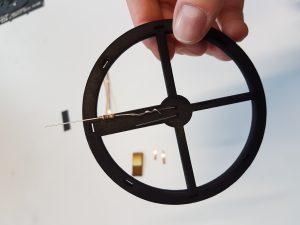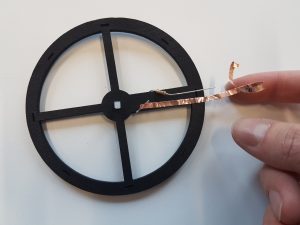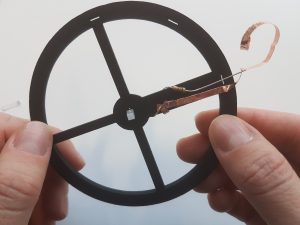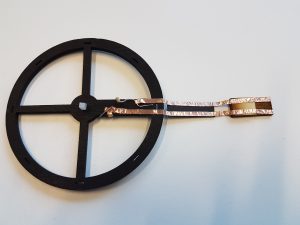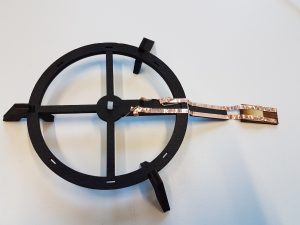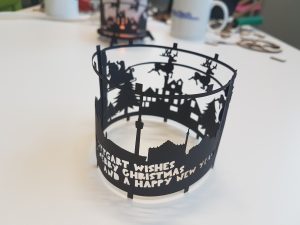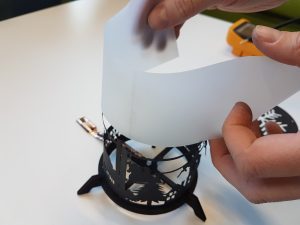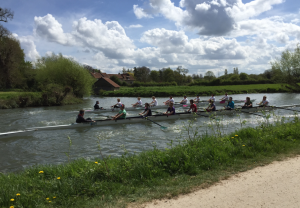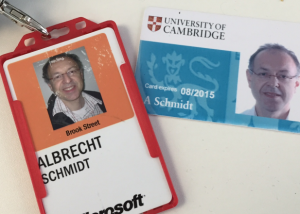Welcome to WordPress. This is your first post. Edit or delete it, then start writing!
Autor: admin
Hello world!
Welcome to hciLab Sites. This is your first post. Edit or delete it, then start blogging!
MUM 2017 is coming to Stuttgart
 The International Conference on Mobile and Ubiquitous Multimedia (MUM) is a leading annual international conference, which provides a forum for presenting the latest research results on mobile and ubiquitous multimedia. The conference brings together experts from both academia and industry for a fruitful exchange of ideas and discussion on future challenges, in a comfortable and effective single-track conference format.
The International Conference on Mobile and Ubiquitous Multimedia (MUM) is a leading annual international conference, which provides a forum for presenting the latest research results on mobile and ubiquitous multimedia. The conference brings together experts from both academia and industry for a fruitful exchange of ideas and discussion on future challenges, in a comfortable and effective single-track conference format.
The 16th International Conference on Mobile and Ubiquitous Multimedia (MUM 2017) will be held in Stuttgart, Germany, November 26 – November 29, 2017. It is organized by the Institute for Visualization and Interactive Systems, University of Stuttgart, Germany.
Visit MUM’17 at www.mum-conf.org
Hello world!
Welcome to hciLab Sites. This is your first post. Edit or delete it, then start blogging!
Merry Christmas 2016
Merry Christmas 2016
Look inside your envelope,
the Christmas card should have them all:
Wooden wheel, a snowflake, too.
Copper things, we have a few.
Resistor, light, they’re all brand new,
a paper cut out with a view.
To bring the gift of light,
for every winter night.
You will need the following pieces for the first assembly part:
four copper strips (two long, two short), LED, resistor, wooden rim, wooden plug and the black piece of paper.
Slide in the LED,
into the holes that be.
Long leg positioned through the oak,
on the left side of the thickest spoke.
First, insert the LED into the two holes on the wooden rim. The longer leg of the LED goes into the left hole, when the thickest spoke points away from you.
Resistor needs to be installed,
‚cause, otherwise, it will explode.
Remember the longer diode leg,
it connects to the pole that adds (+).
Bend the legs towards the other side of the spoke and attach the resistor to one of the legs. Make sure it is tightly connected. Remember the position of the longer leg for later on.
Onto the wooden ring,
attach with copper string.
Wrap around the leggy bit,
the extra strings will make it fit.
Now it is time to attach the copper strings to the rim. Carefully place the two longer copper strips on both sides of the thick spoke using the adhesive side. Twist it around the LED legs and use the short strips to fixate it. CAUTION: the adhesive side does not conduct electricity, so make sure the other side is attached to the LED legs.
The gluey side just won’t conduct,
hence wires must be nicely tucked.
Repeat the same step for the second leg. When finished, the result should look similar to the picture above.
Plus pole connects to long diode leg,
make sure this is correct.
Conductive strips for the plug,
need to be edge-snug.
Connect the plug to the two stripes using the small piece of black paper to keep the strips separated. Make sure to connect the longer LED leg to the plus pole (marked on the plug). If you followed all steps up until now, you can simply connect it as shown above. The strips attached to the plug should be spaced as far apart as possible (on both side), but must not overlap over the ledge.
Attach the plug you just might,
and you have a working light.
You may want to test your Christmas lantern for now. Plug it into a USB-charger and check if the LED lights up. If not, check the wiring, especially the connection between LED legs and copper strips. Consider checking for correct polarity. Do not despair if your light does not work. You can still proceed and build the final lantern.
The lantern stands on wooden feet,
and then you join the paper sheets.
Be aware of text alignment,
else you prolong the assignment.
Now it is time to make it look like a lantern. Attach the feet to the wooden rim and connect the two paper ornaments. Check the text orientation before connecting both pieces. Be sure to insert the paper hooks as shown in the picture for a stable and round lantern.
And now it’s time to mount the screen,
it wraps around the wooden rim.
Slide the transparent paper into the lantern. For best visual results, position the fold in front of the overlap.
The snowflake goes on top,
ensure that room lights are now off.
Position the quadratic transparent paper on top of the lantern and add the snowflake ornament.
Now it’s time to plug it in,
and pour yourself a Christmas drink.
Highlights 2016!
Congratulations to our PhDs
This year we had 6 people finishing their PhD – the highest number for a single year till now – congratulations!
- Nora Broy: Stereoscopic 3D user interfaces : exploring the potentials and risks of 3D displays in cars
- Bastian Pfleging: Automotive User Interfaces for the Support of Non-Driving-Related Activities
- Stefan Schneegaß: Enriching mobile interaction with garment-based wearable computing devices
- Markus Funk: Augmented Reality at the Workplace: A Context-Aware Assistive System using In-Situ Projection
- Tilman Dingler: Cognition-Aware Systems to Support Information Intake and Learning
- Tanja Döring: A Materials Perspective on Human-Computer Interaction
Exciting new Projects
In 2016 we started a number of new projects:
- ERC Consolidator Grant: AMPLIY (Amplifying Human Perception Through Interactive Digital Technologies)
- Tangible learning: Project Be-greifen (BMBF funded)
- Augmented reality for learning applications: Project KoBeLu (BMBF funded)
Event Highlight
- 6th International Conference on the Internet of Things (IoT 2016), November 7–9, 2016 in Stuttgart, Germany
Hello world!
Welcome to hciLab Sites. This is your first post. Edit or delete it, then start blogging!
Hello world!
Welcome to hciLab Sites. This is your first post. Edit or delete it, then start blogging!
Workshop @ CHI 2017
We will co-organize a workshop on Amplification and Augmentation of Human Perception at CHI 2017.
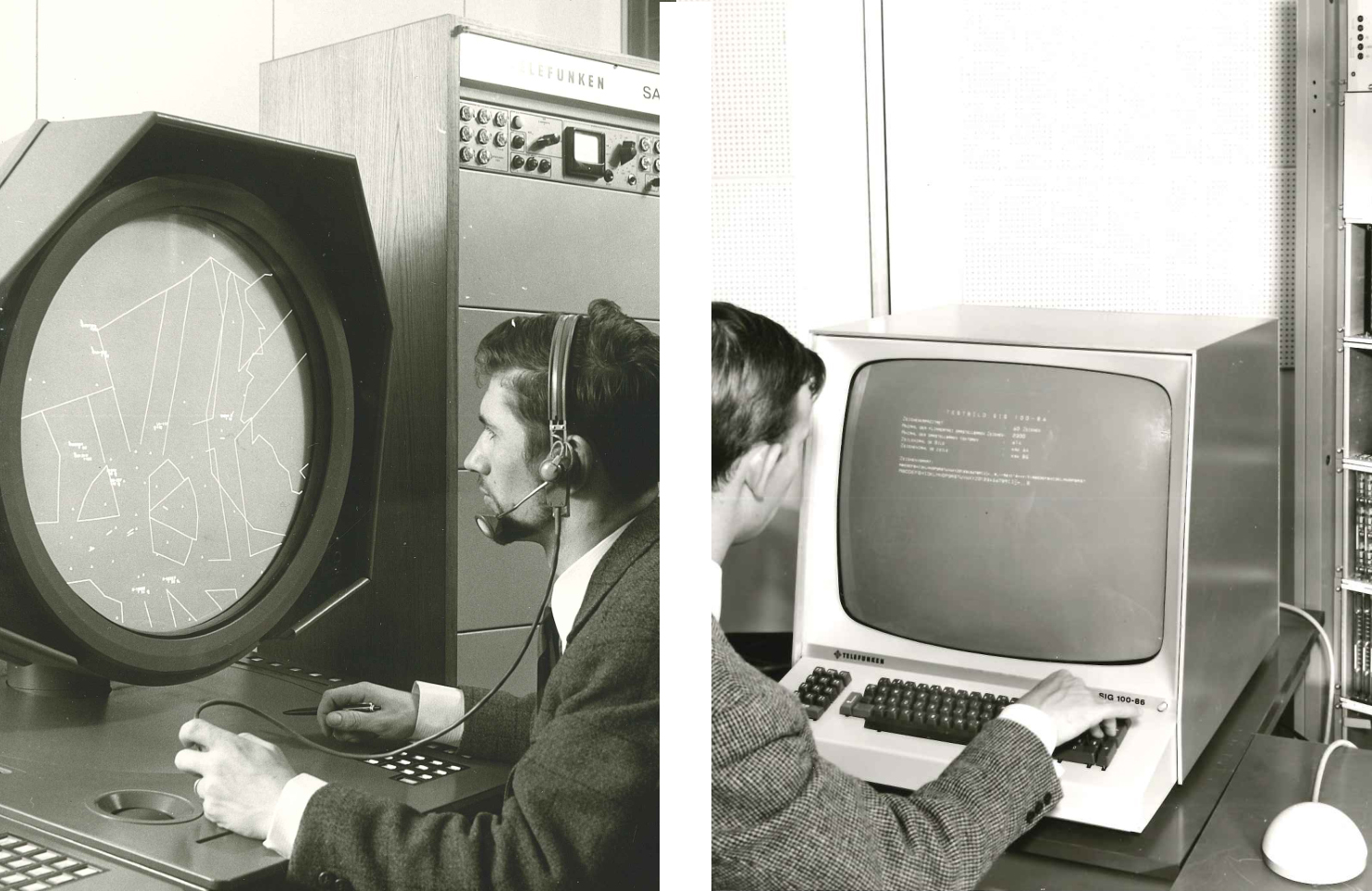
50 Jahre mit der Maus
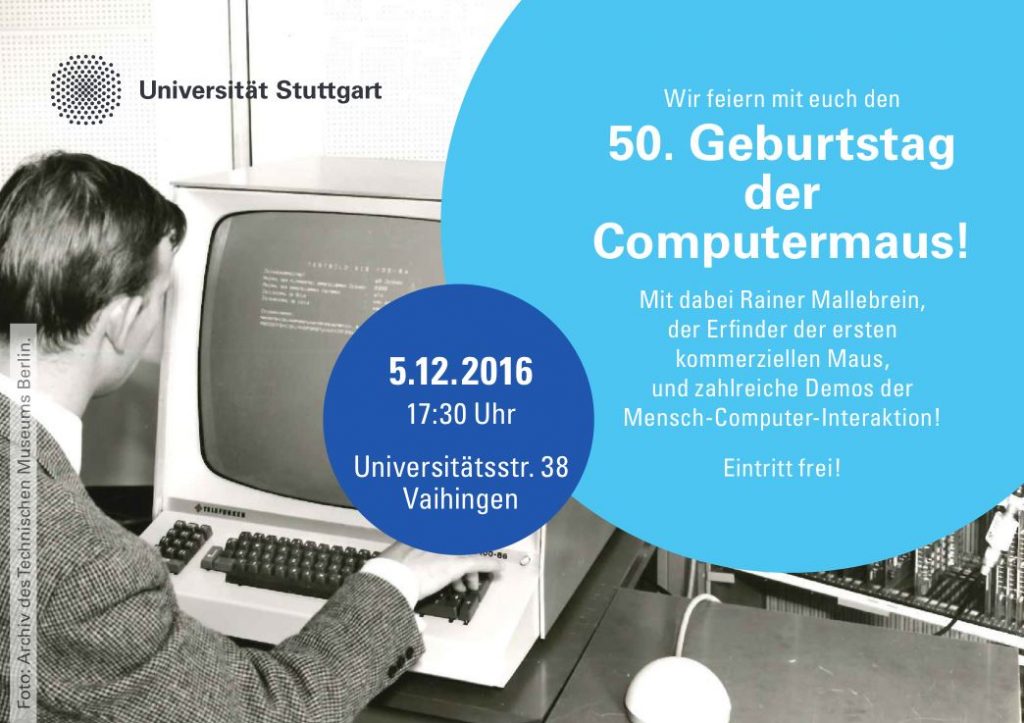 Die Abteilung für Mensch-Computer Interaktion der Universität Stuttgart, das Informatik-Forum Stuttgart (infos e.V.) und die GI- / ACM-Regionalgruppe Stuttgart / Böblingen laden ein zur Festveranstaltung “ 50 Jahre Computer mit der Maus“ am
Die Abteilung für Mensch-Computer Interaktion der Universität Stuttgart, das Informatik-Forum Stuttgart (infos e.V.) und die GI- / ACM-Regionalgruppe Stuttgart / Böblingen laden ein zur Festveranstaltung “ 50 Jahre Computer mit der Maus“ am
Montag, 5. Dezember 2016, 17:30 – 19:00 Uhr.
Alle Interessierten sind herzlich zu dieser Veranstaltung eingeladen. Die Teilnahme ist kostenfrei. Anmeldungen bitte unter: http://www.infos.informatik.uni-stuttgart.de/50jahremaus/.
Von der klobigen Kugel bis zur ergonomischen High‐End‐Maus: Das griffigste Eingabegerät in der Mensch‐Computer‐Interaktion feiert Geburtstag. Wir feiern mit der Maus und werfen einen Blick auf die Geschichte des ersten Nagers aus Deutschland. Die Computermaus ‐ „Wer hat sie erfunden?“ Heute gilt der Amerikaner Douglas C. Engelbart als Erfinder der ersten Computermaus. Das Team um Rainer Mallebrein bei der deutschen Firma Telefunken stellte aber schon im Oktober 1968 – wenige Monate vor der Veröffentlichung von Engelbarts Maus – die Rollkugelsteuerung (RKS) vor, die als Eingabegerät an einem Bildschirm hing. Den Ruhm als Erfinder der Computermaus konnten die Ingenieure leider nicht für sich beanspruchen. Man hielt die Maus für nicht patentwürdig, denn sie war nur ein schlichtes Beiwerk für den neuen Großrechner TR440. Aber die Mäuse blieben und sind auch 50 Jahre später nicht mehr aus unserem Alltag wegzudenken. Gemeinsam mit Rainer Mallebrein werfen wir einen Blick zurück in die Entstehungsgeschichte der Maus, lernen ihren ersten Anwendungsfall kennen und erleben die Evolution der Maus bis heute. Wird es den zuverlässigen Nager auch in Zukunft geben? Diskutieren Sie im Anschluss mit und teilen Sie Ihre Erinnerungen.
17:30 – 17:40: Begrüßung / Einlass
17:40 – 18:10: Prof. Dr. Horst Oberquelle, „Eine kurze Geschichte der Eingabegeräte – Ein Blick in das Hamburger Mouse-oleum“
18:10- 18:30: Valentin Schwind, Clemens Krause: Eingabegeräte aus dem Computermuseum Stuttgart und die 3D Rekonstruktion des RKS 100-86 (Studentenprojekt).
18:30- 19:10: Im Gespräch: mit Herrn Mallebrain und mit Prof. Rul Gunzenhäuser über die Rollkugel (Moderation Albrecht Schmidt)
19:10 – 19:30: Impuls: Was kommt nach der Maus? Die Zukunft der Mensch-Computer-Interaktion (Albrecht Schmidt)
19:30: Gespräche mit Snacks und Getränken
Wir freuen uns auf Ihr Kommen!
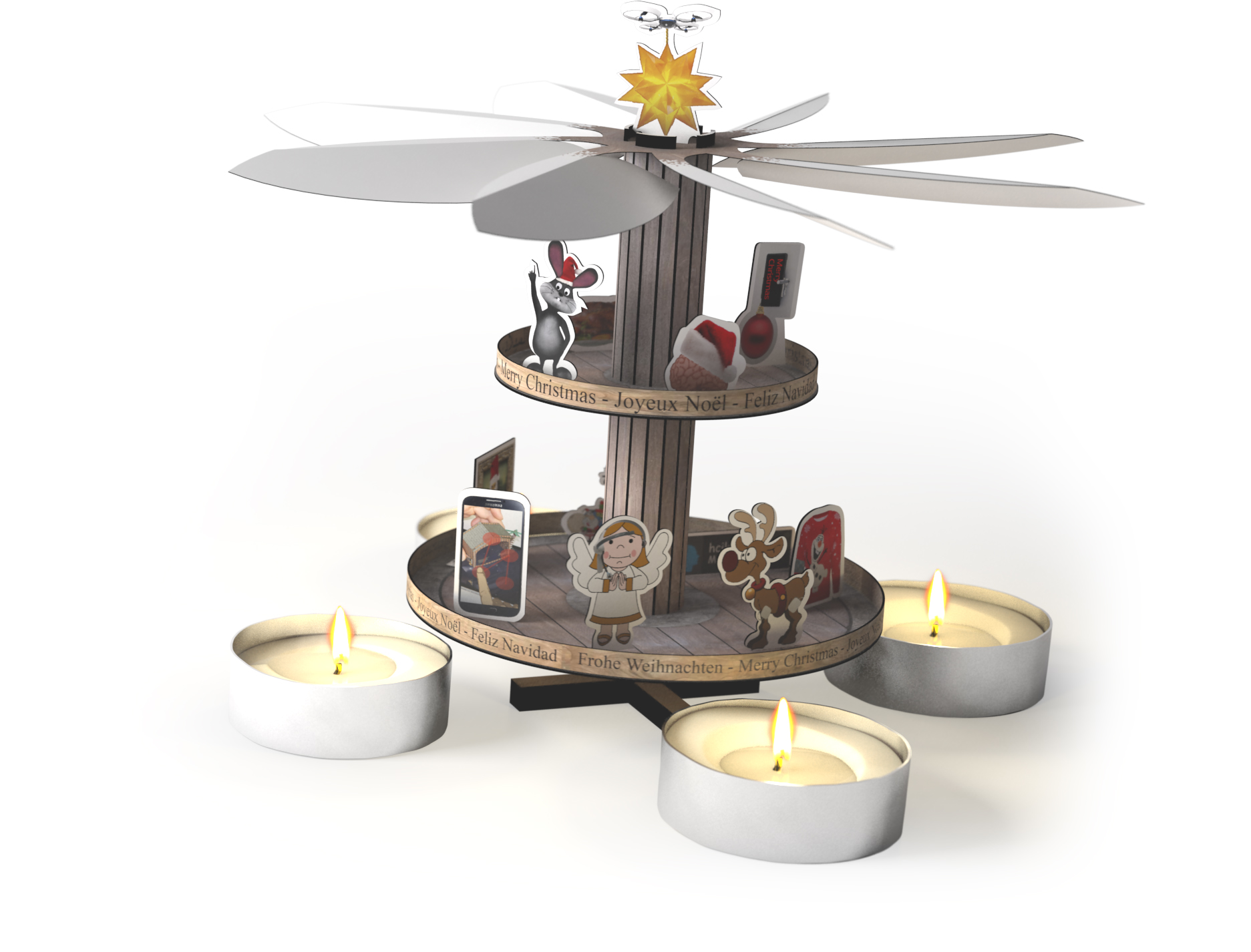
Merry Christmas 2015!
Dear colleagues and friends,
we hope you received your exclusive hcilab xmas construction kit, version 4.0. The design is inspired by the traditional German Christmas pyramid (instructions for last year’s Christmas kit you find here). To fully enjoy the hcilab Christmas experience, here are quick steps to a successful assembly:
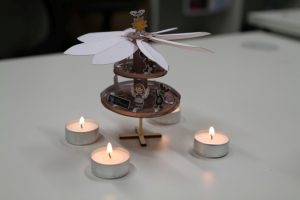
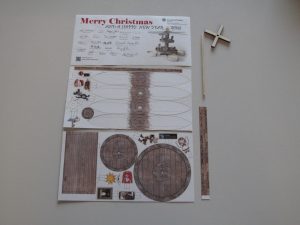
Click here to see the instructions
This is the first construction kit that – if assembled right – will move. We are curious about your result and we would like to see if it really moves. Please take a picture or better a movie of your final version and we would be happy if you email it to us, or if you share your accomplishment with us on facebook or link to it in a blog comment.
It is now – nearly by the day – 5 years that our group started at the University of Stuttgart. The group is much bigger now than we anticipated, and hence we work closer together (=more people have to share a room).
Absence leads to productivity?
While Albrecht enjoyed his time in Cambridge working with Per Ola Kristensson at the University and with Steve Hodges’ Sensor and Devices group at Microsoft Research, the group was very productive.
CHI2015 in Korea
The ACM SIGCHI was this year for the first time in Asia and we participated, presenting research results in different forms.
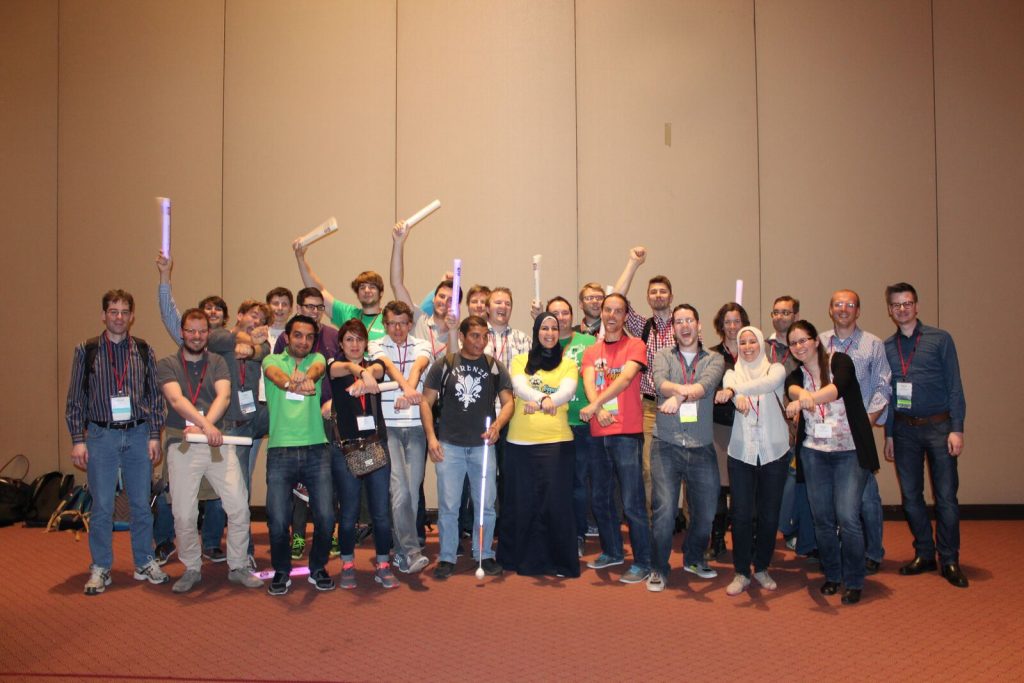
Postdoc++ == Professor
At the moment we are without postdocs, as Katrin Wolf and Oliver Korn left us. Katrin accepted an offer from the University of Art & Design in Berlin (btk) and is now Professor for media informatics. Oliver Korn joint Offenburg University of Applied Sciences and is now professor for human computer interaction. We are looking forward to 2016 and to the new postdocs we have hired.
German HCI conference with 750+ People in Stuttgart
In September we ran the German HCI conference Mensch und Computer, which had more than 750 attendees. Organizing such a conference at the University is a major undertaking and it kept many of us very busy.
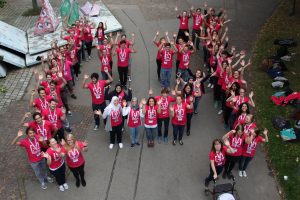
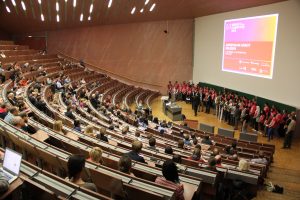
Book with some of our research highlights
Our institute is growing and we have a book to highlight ongoing projects and research in Computer Graphics, Visualization, Computer Vision, and Human-Computer-Interaction. The book is in German and online available as PDF. For the project in Human-Computer-Interaction and Socio-Cognitive Systems see from page 53 onwards.


New and Ongoing Projects
This year four new larger projects started and we have several ongoing projects – too many to describe all of them. If you are around in Europe Stuttgart is really close – please take the chance and visit us. Here are some pointers to the larger projects:
New projects in 2015
SFB-TRR161 (DFG funded). Collaborative Research Center on Quantitative Methods for Visual Computing with University of Konstanz and the Max Planck Institute in Tübingen.
CIMPLEX (EU H2020 funded). Bringing CItizens, Models and Data together in Participatory, Interactive SociaL EXploratories
DAAN (BMBF funded). Design of ambient adaptive notification environments.
FeuerWeRR (BMBF funded). Augmented reality thermal camera for fire fighters.
Ongoing projects
MotionEAP (BMWi funded and extended as everyone is excited by the outcome so far): increasing efficiency in manual production through projected augmented reality. < http://www.motioneap.de/ >
Recall (European Project): Re-thining and re-defining memory augmentation. Augmenting the human mind has many facets.
SimpleSkin (European Project): Cheap, textile based whole body sensing systems for interaction, physiological monitoring, and activity recognition.
meSch (European Project): Material EncounterS with digital cultural Heritage.
SimTech (DFG funded): Interaction with simulation systems.
We are looking forward to a set of projects starting in 2016 and would like to wish all collegues, friends, acquaintances, and our families the very best for 2016!
— Albrecht Schmidt
Some Publications in 2015
Florian Alt, Stefan Schneegass, Alireza Sahami Shirazi, Mariam Hassib, and Andreas Bulling. 2015. Graphical Passwords in the Wild: Understanding How Users Choose Pictures and Passwords in Image-based Authentication Schemes. In Proceedings of the 17th International Conference on Human-Computer Interaction with Mobile Devices and Services (MobileHCI ’15). ACM, New York, NY, USA, 316-322.
Katrin Wolf, Stefan Schneegass, Niels Henze, Dominik Weber, Valentin Schwind, Pascal Knierim, Sven Mayer, Tilman Dingler, Yomna Abdelrahman, Thomas Kubitza, Markus Funk, Anja Mebus, and Albrecht Schmidt. 2015. TUIs in the Large: Using Paper Tangibles with Mobile Devices. In Proceedings of the 33rd Annual ACM Conference Extended Abstracts on Human Factors in Computing Systems (CHI EA ’15). ACM, New York, NY, USA, 1579-1584.
Yomna Abdelrahman, Alireza Sahami Shirazi, Niels Henze, and Albrecht Schmidt. 2015. Investigation of Material Properties for Thermal Imaging-Based Interaction. In Proceedings of the 33rd Annual ACM Conference on Human Factors in Computing Systems (CHI ’15). ACM, New York, NY, USA, 15-18.
Luis A. Leiva, Alireza Sahami, Alejandro Catala, Niels Henze, and Albrecht Schmidt. 2015. Text Entry on Tiny QWERTY Soft Keyboards. In Proceedings of the 33rd Annual ACM Conference on Human Factors in Computing Systems (CHI ’15). ACM, New York, NY, USA, 669-678.
Max Pfeiffer, Tim Dünte, Stefan Schneegass, Florian Alt, and Michael Rohs. 2015. Cruise Control for Pedestrians: Controlling Walking Direction using Electrical Muscle Stimulation. In Proceedings of the 33rd Annual ACM Conference on Human Factors in Computing Systems (CHI ’15). ACM, New York, NY, USA, 2505-2514.
Niels Henze, Thomas Olsson, Stefan Schneegass, Alireza Sahami Shirazi, and Kaisa Väänänen-Vainio-Mattila. 2015. Augmenting food with information. In Proceedings of the 14th International Conference on Mobile and Ubiquitous Multimedia (MUM ’15). ACM, New York, NY, USA, 258-266.
Markus Funk, Alireza Sahami Shirazi, Sven Mayer, Lars Lischke, and Albrecht Schmidt. 2015. Pick from here!: an interactive mobile cart using in-situ projection for order picking. In Proceedings of the 2015 ACM International Joint Conference on Pervasive and Ubiquitous Computing (UbiComp ’15). ACM, New York, NY, USA, 601-609.
Lars Lischke, Sven Mayer, Katrin Wolf, Alireza Sahami Shirazi, and Niels Henze. 2015. Subjective and Objective Effects of Tablet’s Pixel Density. In Proceedings of the 33rd Annual ACM Conference on Human Factors in Computing Systems (CHI ’15). ACM, New York, NY, USA, 2769-2772.
Sven Mayer, Katrin Wolf, Stefan Schneegass, and Niels Henze. 2015. Modeling Distant Pointing for Compensating Systematic Displacements. In Proceedings of the 33rd Annual ACM Conference on Human Factors in Computing Systems (CHI ’15). ACM, New York, NY, USA, 4165-4168.
Martin Pielot, Tilman Dingler, Jose San Pedro, and Nuria Oliver. 2015. When attention is not scarce – detecting boredom from mobile phone usage. In Proceedings of the 2015 ACM International Joint Conference on Pervasive and Ubiquitous Computing (UbiComp ’15). ACM, New York, NY, USA, 825-836.
Tilman Dingler and Martin Pielot. 2015. I’ll be there for you: Quantifying Attentiveness towards Mobile Messaging. In Proceedings of the 17th International Conference on Human-Computer Interaction with Mobile Devices and Services (MobileHCI ’15). ACM, New York, NY, USA, 1-5.




